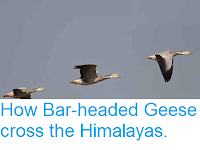The advent of satellite and radio tags that can be used to monitor the movement of wild Animals in their natural environment has revolutionised fields such as ecology, conservation and wildlife management, providing insights into the movement and behaviour of many species that have been elusive to Human trackers for generations. However, like all technologies these tracking systems have their potential downsides, particularly in their ability to modify the behaviour of both humans and animals. The potential of such tags to modify the behaviour, or even directly harm, the subjects of these studies was anticipated very early in the use of the technology, and most modern studies consider these possibilities carefully before a single tag is deployed.
In a paper published in the journal Conservation Biology on 20 February 2017, Steven Cooke and Vivian Nguyen of the Fish Ecology and Conservation Physiology Laboratory at Carleton University, Steven Kessel of the Department of Fisheries and Wildlife at Michigan State University, Nigel Hussey of the Department of Biology at the University of Windsor, Nathan Young of the Department of Sociology and Anthropology at the University of Ottawa and Adam Ford of The Irving K. Barber School of Arts and Sciences at The University of British Columbia, discuss a number of examples of how Humans have behaved in response to tagging programs, and the implications of these for people and organisations involved in animal tracking studies.
Firstly Cooke et al. note that there have been a number of attempts to obtain data from real-time tracking systems (systems that constantly broadcast the position of an animal to scientists monitoring it, as opposed to systems that broadcast packages of data at intervals), for the purposes of hunting or otherwise harming the subjects of the studies.
In Minnesota in 2001 a group of anglers petitioned to be given access to data from a tagging study on Northern Pike, Esox lucius, agruing that since the study was publicly funded, they, as members of the public, were entitled to the data. The case was rejected by the court, on the basis that the data was collected to improve the catch-rates of recreational anglers, but the danger remains that a similar case elsewhere might be more successful. In 2014 White Sharks, Carcharodon carcharias, tagged as part of a study of their spatial ecology with a view to improving conservation planning were targeted for culling by the State Government of Western Australia, which had access to the data as part of the permitting agreement under which the researchers were working, as the government determined they were a threat to bathers on the state's beaches, despite the fact that the species is considered Endangered underh the terms of the Australian Environmental Protectionand Biodiversity Conservation Act.
An additional problem is that members of the public are often able to obtain equipment that enables them to track tagged Animals directly. Even it this is done with essentially benign intent, for purposes such as photography or wildlife viewing, there can still be negative effects, such as Animals reacting to, or becoming habituated to, the presence of Humans and modifying their behaviour. In one such case authorities at Banff National Park in Alberta were forced to introduce restrictions on the use of VHF radio receivers in the park due to concerns about the harassment of Animals wearing tags. More worryingly in 2013 an attempt was made to hack a GPS system tracking Tigers in the Panna Tiger Reserve in Madhya Pradesh, India, apparently with the intention of poaching the Tigers.
Cooke et al. also raise concerns about the deployment of tagging systems for malign purposes. Tagging is generally considered an expensive technique by researchers, as most studies require a large number of tags to gather useful data. However a single tag could potentially be used for the purpose of tracking the movements of a group of social Animals. exposing that population to the risk of hunting, at a relatively low cost.
There is also the potential for the technology to be deployed in order to disrupt studies, for example by deploying extra tags to disrupt data collection. This might seem an obscure threat, but many conservation projects have commercial implications, potentially with vested interests that stand to benefit from undermining the quality of data collection, and some fringe groups are known to object to conservation projects for less definable reasons, for example it has been speculated that Wolves in Yellowstone National Park have been targeted by hunters who objected to the presence of Wolves in the park, and who may have been able to access encrypted data from radio collars worn by the Animals.
Tagged Wolf in Yellowstone National Park. William Campbell/US Fish and Wildlife Service/Wikipedia.
A negative public perception of tagging is also a potential problem, potentially undermining public support for conservation projects using the technology. Cooke et al. note that some indigenous fishermen around the Fraser River watershed in Canada objected to a tagging program targeting Pacific Salmon on the basis that it tampered with a food source (thought the majority of the population was strongly supportive of the project), while in parts of the US visitors to national parks have complained that visible tags on animals detract from the wilderness experience.
See also...
Follow Sciency Thoughts on Facebook.





